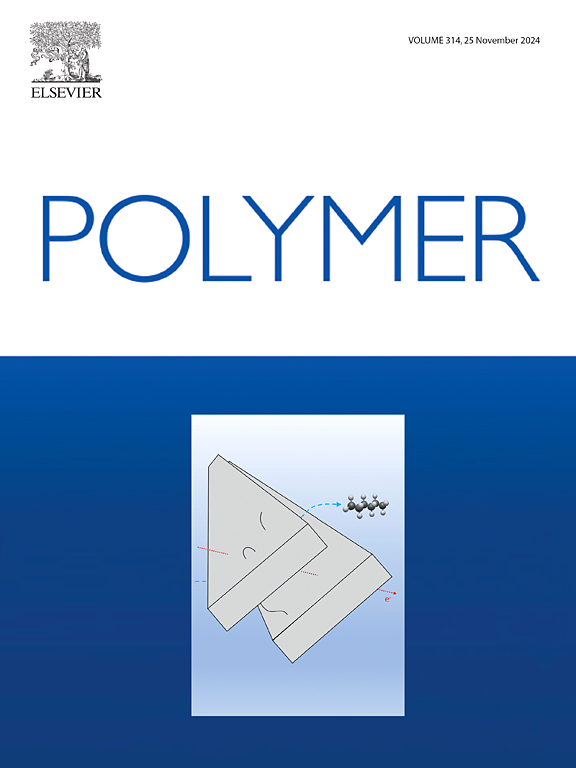hipe模板纤维素基多孔IPN支架用于废水中铜离子的高效去除
IF 4.5
2区 化学
Q2 POLYMER SCIENCE
引用次数: 0
摘要
被铜等重金属污染的工业废水对环境和公众健康构成重大威胁,因此有必要制定有效和可持续的补救战略。在这项研究中,通过在木浆纤维素基质中聚合丙烯酸,合成了一种新型的基于纤维素的高内相乳液互穿聚合物网络(HIPE-IPN),以复制天然吸附剂的分层孔隙度。这种创新的方法将纤维素的结构坚固性与合成聚合物的功能可调性相结合,从而产生具有增强吸附特性的多孔支架。通过批量吸附实验对关键工艺参数进行了优化,结果表明:吸附剂用量为2 g/L、pH为5、初始Cu2+浓度为500 mg/L、接触时间为90 min时,吸附Cu2+效果最佳。在此条件下,HIPE-IPN的吸附量(qmax)为139.8±7.5 mg/g,超过了预处理木浆纤维素(60.5±3.3 mg/g)和散装IPN(113.8±6.1 mg/g)。动力学模型表明,吸附过程符合准二阶模型(R2 >;0.99),平衡数据拟合Langmuir等温线模型(R2 >;0.98),最大Langmuir吸附量为270.3 mg/g。该研究强调了利用生物衍生的HIPE-IPN框架高效去除铜离子的新颖性,表明吸附性能比传统方法有了实质性的改善。这些发现表明,所开发的HIPE-IPN支架在工业废水处理应用中具有相当大的前景,为重金属修复和资源回收提供了环保、可扩展和经济高效的解决方案。本文章由计算机程序翻译,如有差异,请以英文原文为准。


HIPE-templated cellulose-based porous IPN scaffold for efficient copper ion removal from wastewater
Industrial wastewater contaminated with heavy metals such as copper poses a significant threat to environmental and public health, necessitating the development of efficient and sustainable remediation strategies. In this study, a novel cellulose-based high internal phase emulsion interpenetrating polymer network (HIPE-IPN) was synthesized by polymerizing acrylic acid within a wood-pulp cellulose matrix to replicate the hierarchical porosity of natural adsorbents. This innovative approach integrates the structural robustness of cellulose with the functional tunability of synthetic polymers, resulting in a porous scaffold with enhanced sorption characteristics. Batch adsorption experiments were conducted to optimize key process variables, revealing that the maximum adsorption of Cu2+ occurred at an adsorbent dosage of 2 g/L, pH 5, initial Cu2+ concentration of 500 mg/L, and a contact time of 90 min. Under these conditions, the HIPE-IPN exhibited a significantly improved sorption capacity (qmax) of 139.8 ± 7.5 mg/g, surpassing both pre-treated wood-pulp cellulose (60.5 ± 3.3 mg/g) and bulk IPN (113.8 ± 6.1 mg/g). Kinetic modelling indicated that the adsorption process followed a pseudo-second-order model (R2 > 0.99), while equilibrium data fitted the Langmuir isotherm model (R2 > 0.98), with a maximum Langmuir adsorption capacity of 270.3 mg/g. The study highlights the novelty of utilizing a bio-derived HIPE-IPN framework for efficient copper ion removal, demonstrating a substantial improvement in adsorption performance over conventional methods. These findings suggest that the developed HIPE-IPN scaffold holds considerable promise for industrial wastewater treatment applications, offering an eco-friendly, scalable, and cost-effective solution for heavy metal remediation and resource recovery.
求助全文
通过发布文献求助,成功后即可免费获取论文全文。
去求助
来源期刊

Polymer
化学-高分子科学
CiteScore
7.90
自引率
8.70%
发文量
959
审稿时长
32 days
期刊介绍:
Polymer is an interdisciplinary journal dedicated to publishing innovative and significant advances in Polymer Physics, Chemistry and Technology. We welcome submissions on polymer hybrids, nanocomposites, characterisation and self-assembly. Polymer also publishes work on the technological application of polymers in energy and optoelectronics.
The main scope is covered but not limited to the following core areas:
Polymer Materials
Nanocomposites and hybrid nanomaterials
Polymer blends, films, fibres, networks and porous materials
Physical Characterization
Characterisation, modelling and simulation* of molecular and materials properties in bulk, solution, and thin films
Polymer Engineering
Advanced multiscale processing methods
Polymer Synthesis, Modification and Self-assembly
Including designer polymer architectures, mechanisms and kinetics, and supramolecular polymerization
Technological Applications
Polymers for energy generation and storage
Polymer membranes for separation technology
Polymers for opto- and microelectronics.
 求助内容:
求助内容: 应助结果提醒方式:
应助结果提醒方式:


